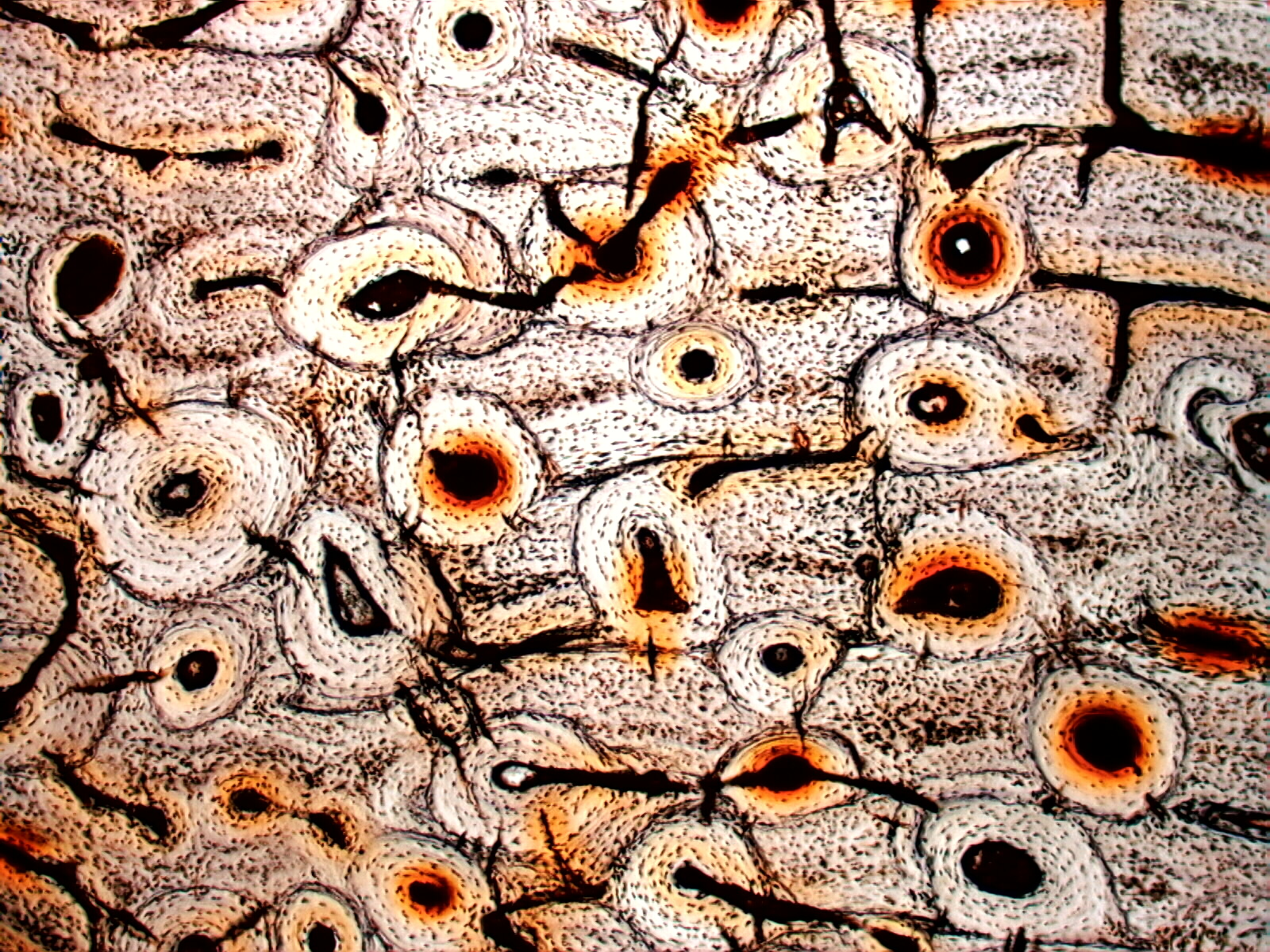This week I have been a good girl (mostly) trying to catch up on my City and Guilds work, there’s been some dyeing of wools and animal fibres and using natural fibre colours. It’s very easy to overlook all the lovely browns, creams and greys that wool naturally comes in when confronted by the vast array of juicy, commercially dyed wools that are so readily available but I hope I can convince you to at least take a second look at the natural colours too….
For the current series of C&G assignments I have been using bone micrographs as my starting point and this piece was no exception. I found this photo on the Microlab Gallery and used it for inspiration. This is a piece of fossilised dinosaur bone as seen under the microscope.
Here are the fibres wetted out ready for rolling, I even used some of my hand-spun Jacob wool for drawing lines (my spinning is still a bit erratic but is getting better and I like the thick and thin effect in this painting).
And the finished piece.
I really like this piece, it is quite heavily textured and I’m finding hard not to stroke it whenever I wander past. I think it looks lonely and needs some companions, so will have to make a few more ;o)
For a related assignment we were also asked to make a piece from just white fibres with the intention of dyeing it so that the different design elements would be revealed as not all fibres accept the dye at the same rate. Here is the piece laid out, ready to be wetted out and rolled:
And before dyeing (not very inspiring!):
And after dyeing:
I’m a little disappointed with this piece, I’m glad I incorporated some vegetable fibre (igneo corn top) which does not accept the acid-fast dyes, the corn top is the only element that has provided a reasonable amount of contrast. All the wools, silks, mohair and alpaca seem to have accepted the dye fairly evenly so the changes in colour are rather subtle. The different textures are nice though. I am tempted to add some embroidery to make it more interesting…..







Hi Teri ! I now know you "know" Jane ! We went to this wonderful workshop with Judit together 😉
I can imagine you're a bit disappointed with the dye test (maybe the acid dyes are too "good" and that it dyes everything (more or less) ….) But I'm sure you'll make the best of it with some embroidery 😉
You will enjoy the weeks with Fiona !!!
(just checked out the Finnish felter too …)
Hi Teri ! I now know you "know" Jane ! We went to this wonderful workshop with Judit together 😉
I can imagine you're a bit disappointed with the dye test (maybe the acid dyes are too "good" and that it dyes everything (more or less) ….) But I'm sure you'll make the best of it with some embroidery 😉
You will enjoy the weeks with Fiona !!!
(just checked out the Finnish felter too …)
I love the dinosaur bone photo and your interpretation – that turned out really well. I have tried the different white fibers and then dye. It worked best for me if I used a variety of plant fibers. Or if you use a wool that is grey or brown and then overdye.
Thanks Els 🙂 Yes, I'm really looking forward to the weeks of exploring with Fiona, I've heard lots of great reviews of her surface design course 🙂 Unfortunately I have just received some bad news about Karoliina's course, it has been cancelled but they are looking at bringing in another tutor on the same dates….
Thanks Els 🙂 Yes, I'm really looking forward to the weeks of exploring with Fiona, I've heard lots of great reviews of her surface design course 🙂 Unfortunately I have just received some bad news about Karoliina's course, it has been cancelled but they are looking at bringing in another tutor on the same dates….
Thanks Ruth, I will give the dyeing on different fibres another go with a wider variety of plant and synthetic fibres. I hadn't considered using greys and browns…. that is definitely food for thought – thank you!
Thanks Ruth, I will give the dyeing on different fibres another go with a wider variety of plant and synthetic fibres. I hadn't considered using greys and browns…. that is definitely food for thought – thank you!